Top 10 Best Nude Beaches in Canada Where You Express Body Legally
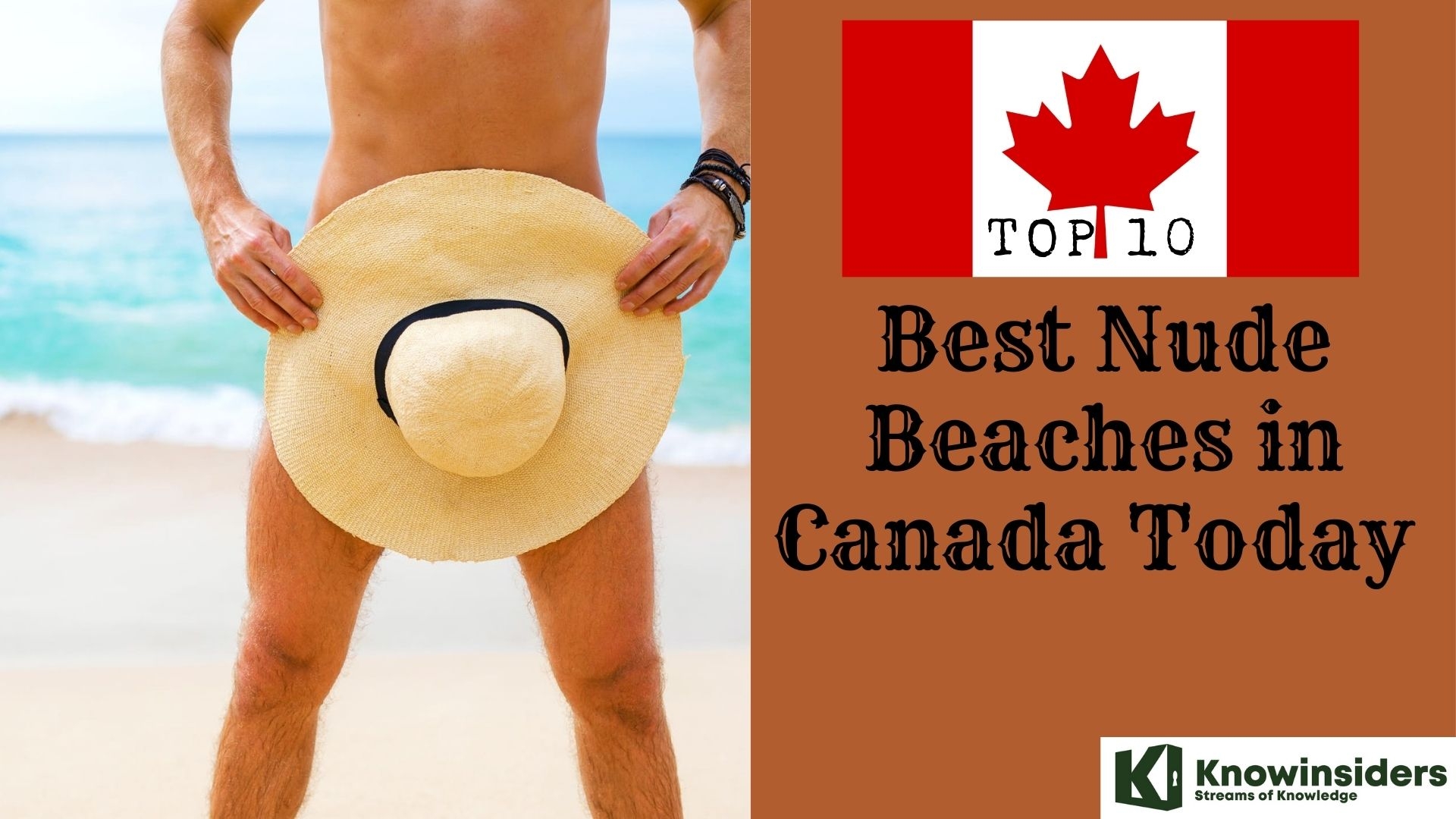 |
| Top 10 Best Nude Beaches in Canada Today |
| Tabe of Content |
Although cottagers have long known the joys of skinny dipping and (secluded) nude sunbathing, public nudity has been tucked carefully away—until recently. More and more people are discovering the freedom of baring it all, and where better to get an all-over tan than at one of Canada’s clothing-optional beaches?
It may not feel like it just yet, but summer is right around the corner and that means beach time can't be far behind. Now, Canada may not be thought of as a beach destination for some travellers right now but locals will tell you otherwise.
Toplessness and public nudity in Canada — is it legal, according to Global News
It’s been decades since courts in B.C. and Ontario supported the idea of women going bare-chested if they choose.
However, plenty of questions about the legalities of public nudity, in general, remain. As Canadians prepare for beach season, here’s a look at the laws, the history and some of the controversy.
What are the laws?
The Criminal Code of Canada deals with indecency and nudity under Disorderly Conduct in sections 173 and 174.
Indecency is defined in the Code as wilfully performing “an indecent act in a public place in the presence of one or more persons, or in any place with intent to insult or offend any person.”
Indecency can be a summary offence — meaning a maximum penalty of six months in jail, a $5,000 fine or both — or an indictable offence, which carries a sentence of no more than two years.
For nudity, the Code says that everyone who “without lawful excuse” is nude in public or is even exposed to the public while on private property is guilty of a summary offence. Crucially, the Code doesn’t spell out what nudity is — whether it means exposing certain body parts or rocking your birthday suit.
“Nude” is simply defined as “so clad as to offend against public decency or order.” In addition to the Criminal Code, some municipalities have bylaws that pertain to nudity, Toronto lawyer Jordan Donich explained.
But Canada’s nudity law is “basically never” enforced, in his experience. If someone is charged, it would likely be in conjunction with other offences, he said.
Why? Well, he said, the acceptability of nudity is all about context.
“So, for example, at certain festivals … Pride parade’s a perfect example, you can see how on that event on that day, it’s acceptable, but if it were, for example, not in that context, it could be problematic, right?” he said.
Unlike most charges, laying a nudity charge requires the consent of the attorney general. Donich speculated that it comes down to oversight over police behaviour — and the potential for the law to be applied without safeguards against discrimination.
“The legislation is saying that we want an added layer of oversight before using this section, probably because we also want people to be free and to be allowed to be naked as long as they’re compliant with local bylaws or not committing other criminal acts,” he said.
In 1996, an Ontario Court of Appeal ruling paved the way for women to bare their chests in public.
Gwen Jacob walked down a Guelph, Ont., street on a sweltering day in 1991 without wearing a shirt. She was charged and convicted of committing an indecent act, which was ultimately overturned.
In 2000, the B.C. Supreme Court sided with Linda Meyer, who challenged a bylaw against toplessness at a public pool in Maple Ridge.
A recent incident has brought the issue back into focus. A Vancouver couple, Elsi Dawson and Clementine Smithereens, took off their shirts in defiance after being confronted by fellow beachgoers last weekend.
Jamie Wlesanko accused the couple of lewd behaviour.
“I said: ‘Can I ask you to please not show your privates in front of my children,’” Wlesanko said.
Dawson said the couple was being affectionate but not having sex. “We weren’t full snogging, we were pecking at each other,” she told Global News.
Eventually, the RCMP were called. Wlesanko said she was told they would not attend because being topless in Kelowna is not a crime.
Dawson said the case speaks to the stark contrast in how the public perceives affectionate displays between two women instead of a man and woman.
The history of nudism in Canada
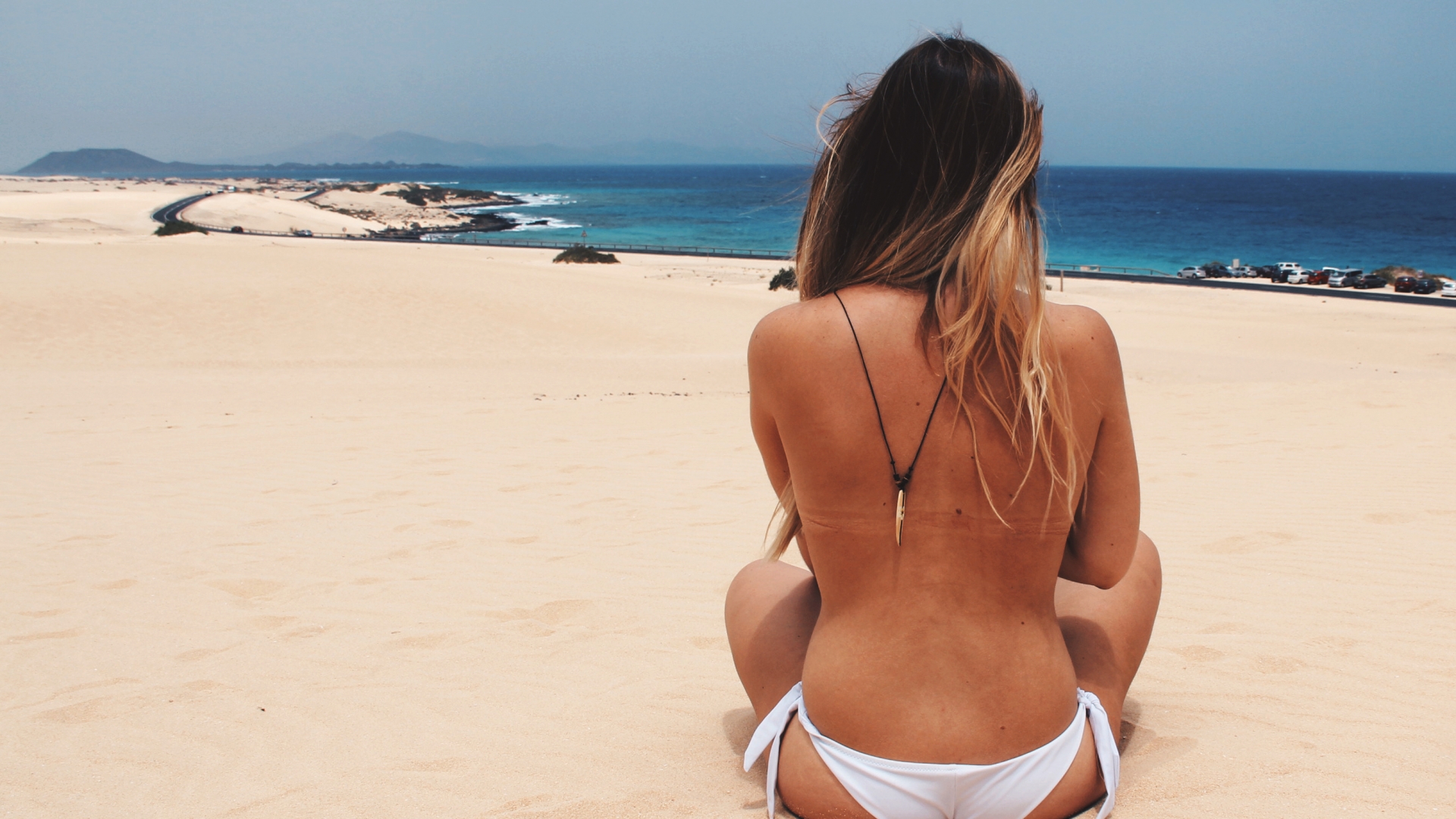 |
| Photo: trivago Magazine |
Questions of the legality are one thing, but public nudity occupies a much larger cultural space.
Mary-Ann Shantz, a history instructor at MacEwan University who wrote a PhD thesis on nudism in postwar Canada, says nudist clubs cropped up in this country largely after the Second World War. They were fuelled by Europeans who emigrated to Canada and brought an interest in nude gatherings and activities with them.
Shantz explained that these clubs operated within the law — and the members largely did not use nudity as a means to disrupt or challenge the social order.
They were “very much wanting to be seen as respectable members of society and so, you know, they say if we form our private clubs and we have fences or natural barriers like trees that shield us from public roads or waterways, then we’re fine to do what we’re doing,” she said.
In fact, they distanced themselves from the activism of the Doukhobors, a radical sect of Russian-Canadian conscientious objectors who held nude marches in the ’30s and ’50s, she said.
An Alberta court decision points out that anti-nudity laws arose out of Parliament’s displeasure with such protests in Western Canada. A different flavour of nudism, what Shantz called the “free beach” movement, arose in the ’60s and ’70s in California and Australia.
What are the 10 most awesome nude beaches in Canada?
There are dozens of nude beaches across the country, though only a handful of them are legally recognized as clothing-optional beaches. Many others are unofficially recognized as clothing-optional beaches where authorities do not arrest nude sunbathers.
1. Wreck Beach (Vancouver)
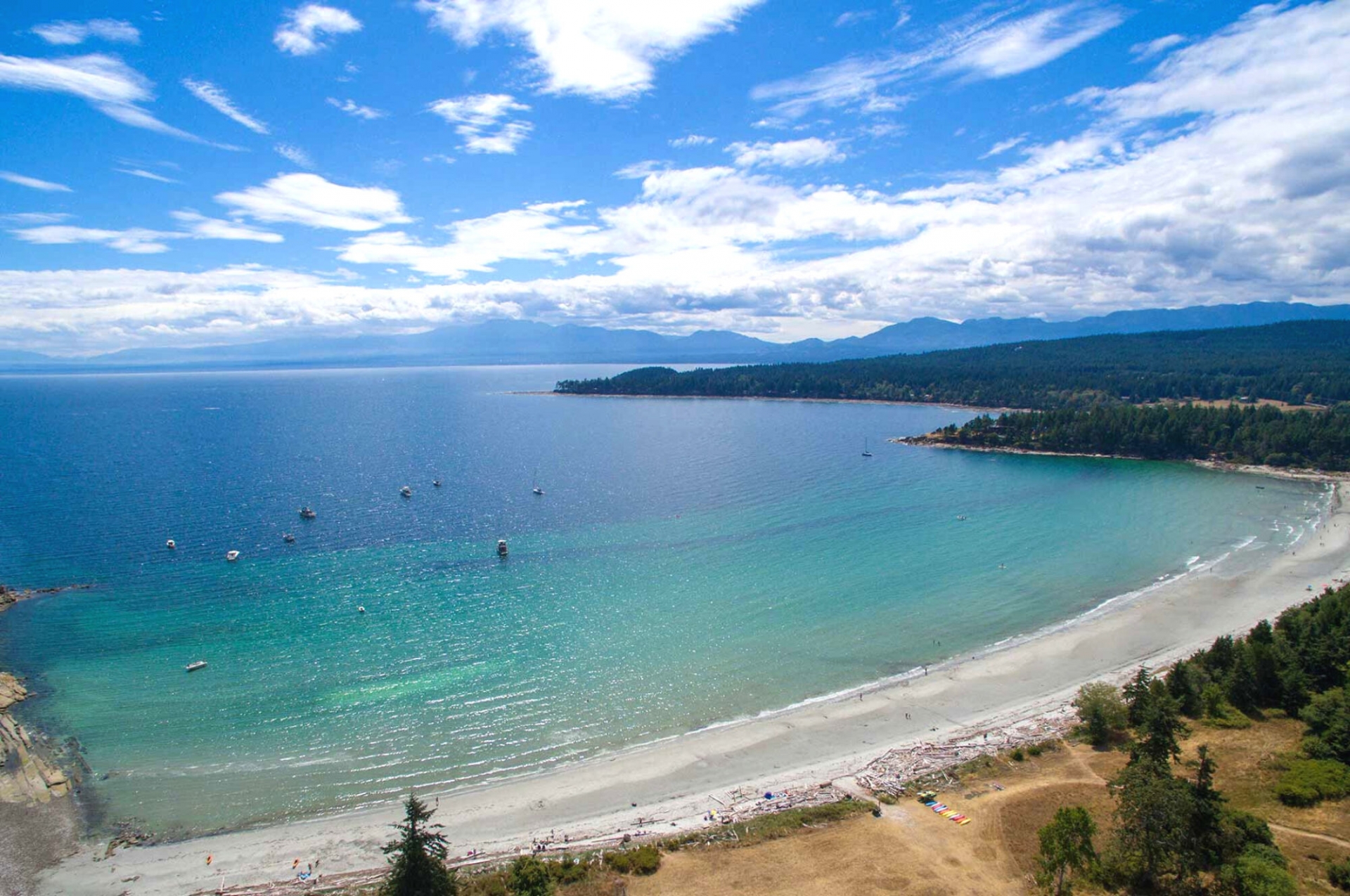 |
| Photo: Tribunebay |
Located on the edge of the University of British Columbia (UBC) in Pacific Spirit Regional Park, Wreck Beach is where Vancouverites (including university students) can go if they want to sunbathe naked.
Wreck Beach isn’t everybody’s cup of tea and it certainly isn’t a mainstream activity. But it is a beautiful beach and you don’t have to take all your clothes off. It’s an interesting place for people watching and being one with nature.
As the signs say though – don’t gawk and stare, and don’t take photos of people without permission. Better yet, it’s probably best to leave the camera at home. (You could also just take your camera on really cold days when you know you’ll be safe like we did!)
Wreck Beach is located right at the edge of UBC, just a short (but very steep) walk down from the Museum of Anthropology. It truly is a steep walk down, and the staircase can sometimes feel like it’s going on forever when you’re walking up it. Make sure you have a water bottle, and are fit enough to handle a ton of stairs.
Tips and Advice
Below are some tips to help you make the most out of your visit to Wreck Beach in case you decide to check it out.
TIP #1: Go in the colder months if you want to visit Wreck Beach but without all the naked people.
TIP #2: Don’t choose to study at UBC solely because it’s one of the only post-secondary institutions (in North America at least) with its own clothing-optional beach. It’s a first-class university even without this unique feature.
TIP #3: If you do go the “clothing optional” route, don’t forget the sunscreen!
TIP #4: Don’t stare, take photos or do anything inappropriate that would make other folks at the beach uncomfortable. Most of the clothing-optional people you’ll see aren’t exhibitionists – they are “naturalists,” so they’re for themselves and not the entertainment of others.
Tip #5: One of the most popular activities at Wreck Beach is swimming. Be aware that the water is pretty cold year-round, even during the summer. Remember not to jump into the water from high up because there may be submerged rocks hidden beneath the surface. Wildlife might also be found although that’s unlikely. Don’t interact with animals such as jellyfish for safety precautions.
Tip #6: There are many annual activities that take place at Wreck Beach, such as the Polar Bear Swim. This occurs on January 1st of each year and many UBC students participate in it.
2. Patricia/Beaconia Beach – Beaconia, Manitoba
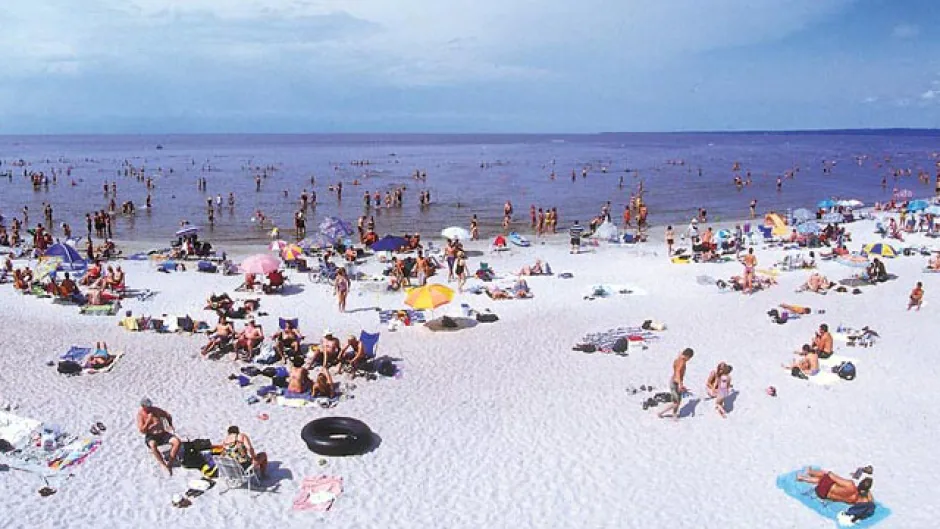 |
| Photo: CBC |
High flood waters earlier this summer prompted the Regional Municipality of St. Clements to declare a state of emergency for Patricia Beach, about an hour north of Winnipeg — so check conditions before visiting the area, located on the southern end of Lake Winnipeg. Patricia Beach is located within Patricia Beach Provincial Park, but if you walk north from the parking lots, you’ll soon come to a clothing-optional section. On busy weekends, you may have to cross a narrow channel over to Beaconia Beach to enjoy being nude without upsetting anyone.
Beaconia Beach is a beautiful and pristine 3 kilometre wide sandy beach located 50 K north of Winnipeg off Highway 59. The beach is divided into clothing mandatory/mostly straight and clothing optional/mostly gay sections. It is accessible either by going to the north end of Patricia Beach and wading north across the lagoon 5 minutes or driving through Beaconia to the parking lot and walking south 15 minutes.
Take highway 59 North from the Perimeter about 40 Kilometers. Go past Patricia Beach about 5 Kilometers to Beaconia. Turn left onto Highway 500. Drive 1 Kilometer to where the paved road turns, but instead of turning go straight onto the gravel road.
Follow the gravel road to the parking lot, about 1 kilometer.
Take the path the the beach, go left, walk 5 minutes through the clothing mandatory beach. Once you reach the big log you have reached the clothing optional beach.
Keep walking 5 minutes through the mostly straight part of the beach to the big clearing.
You have reached the start of the mostly gay area which stretches for the next 1.5 kilometers.
Get naked, relax and enjoy natures finest.
3. Hanlan’s Point on Toronto Islands (Toronto)
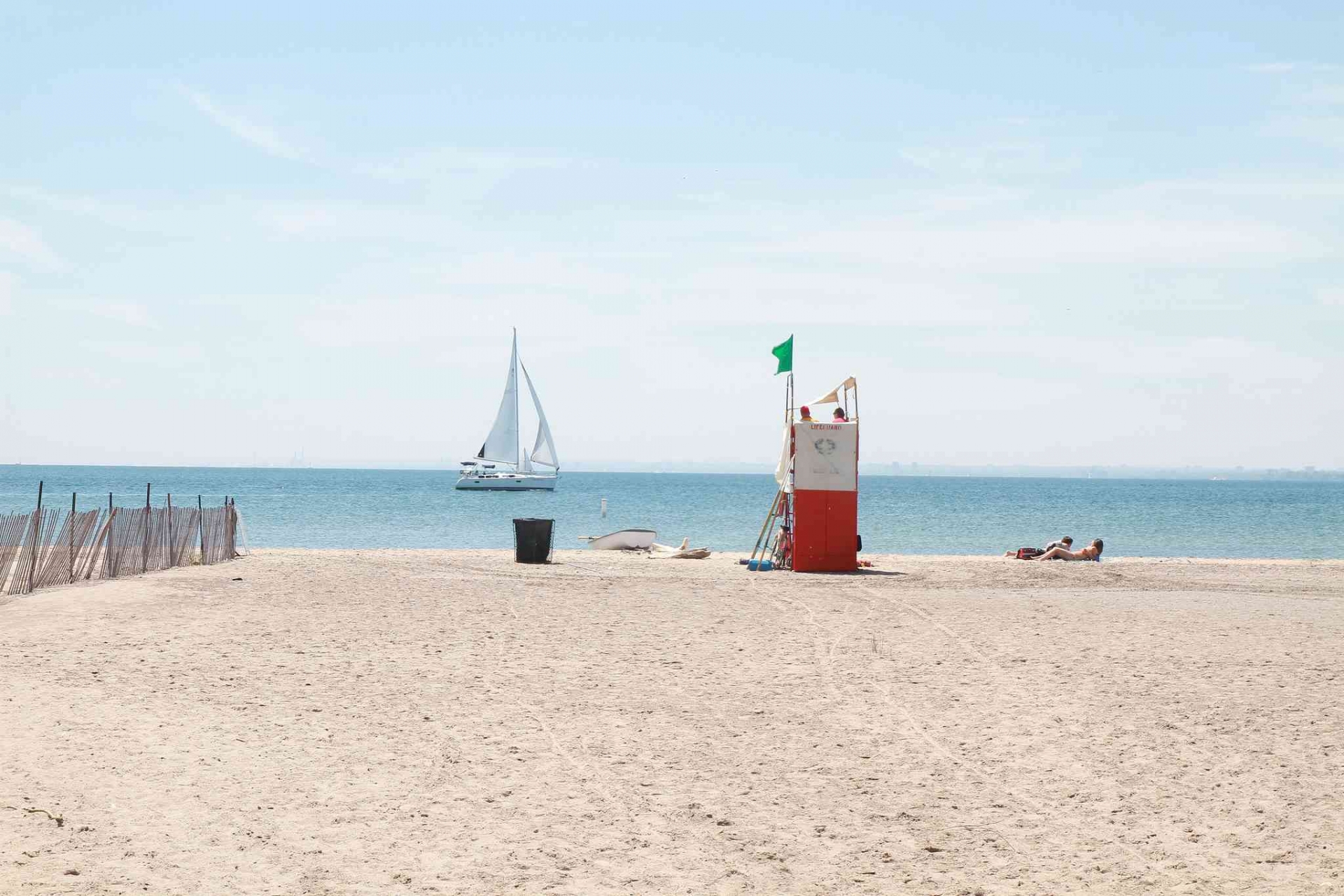 |
| Photo: TripSavvy |
Hanlan's Point, the most westerly of the three main islands that make up the Toronto Island Park, is the most "green" and probably the least busy, though you'll find it well-serviced. It has a baseball diamond, beach - including a clothing optional beach - bike trail, changeroom, drinking fountain, firepits, the Gibraltar Point Lighthouse, outdoor tennis courts, outdoor volleyball, fast-food outlet, 12 picnic sites, and washrooms.
The area near the beach is covered with beautiful but fragile sand dunes, and has a great view of the city. Because the beach is west-facing, it's the best place on the Island to view the sunset. and on Labour Day, to see the Canadian International Airshow.
Hanlan's Point was originally a popular resort community for summer cottagers in the the late 1800s. One of the first to settle there was the Hanlan family, who arrived in 1862. In 1870, they converted their home into a hotel that attracted summer visitors coming to the Island and it became the centre of social activity. A Hanlan son, Ned Hanlan, rowed to the mainland every morning to go to school, and eventually became an internationally famous scull rower. You'll see the large statue of him as you get off the boat at Hanlan's Point.
The Hanlan's Hotel was destroyed by fire in 1909.
In 2002, one kilometer of the Hanlan's beach was officially recognized as Clothing Optional. It's one of only two clothing optional beaches in the country, the other being in Vancouver. The beach has always been "gay friendly," but attracts all kinds of people because of its relaxed, friendly atmosphere. One end of the beach is considered "clothing mandatory", so take your pick.
The Gibraltar Point lighthouse, which now stands inland because of shifting land masses, was built in 1808 to protect ships coming into Toronto harbour from washing ashore during storms. Its first lighthouse keeper JP Rademueller, was murdered by two solider from Fort York, though his body was never found. It is said that the ghost of of JP Rademueller returns every summer, and on hot summer nights, his howls can be heard from one end of the island to the other.
 Top 10 Best Nude Beaches In the U.S Where You Show Body without Being Judged Top 10 Best Nude Beaches In the U.S Where You Show Body without Being Judged |
4. Crystal Crescent Beach, Nova Scotia
 |
| Photo: Nova Scottia |
Known as Halifax's formal nude ocean beach, Crystal Crescent is located in the aptly-named Crystal Crescent Beach Provincial Park which is close to Sambro, Nova Scotia. The beach offers great scenery and can get quite busy on weekends with up to 300 visitors.
Less than an hour by car from downtown Halifax, Crystal Crescent Beach offers an outdoor respite from the busy city. Here, you'll find three white sand beaches, a 6-mile hiking trail and ample opportunities to view wildlife. In the distance, you can see the Sambro Island Lighthouse, which was built in 1759.
Recent visitors praised the beauty of the beach and the clear waters. They also noted that one of the beaches welcomes nude bathing.
The park is located south of Halifax, so you'll need a car to get there. Latrines are available on-site, but there are no other amenities. The park is open daily from dawn to dusk.
Twenty-nine kilometres south of Halifax, Crystal Crescent Beach has lovely white sand and a gorgeous view of the Atlantic. Before you get too excited about skinny dipping, though, be warned: the water is very, very cold for almost the entire year, and the beach itself doesn’t warm up until the summer hits. Chilliness notwithstanding, it’s a peaceful spot, with the clothing-optional section a short walk from the main entrance. If you choose to put your clothes on, explore the 13-km trail loop that hugs the coastline.
5. Paradise Beach – Saskatoon, Saskatchewan
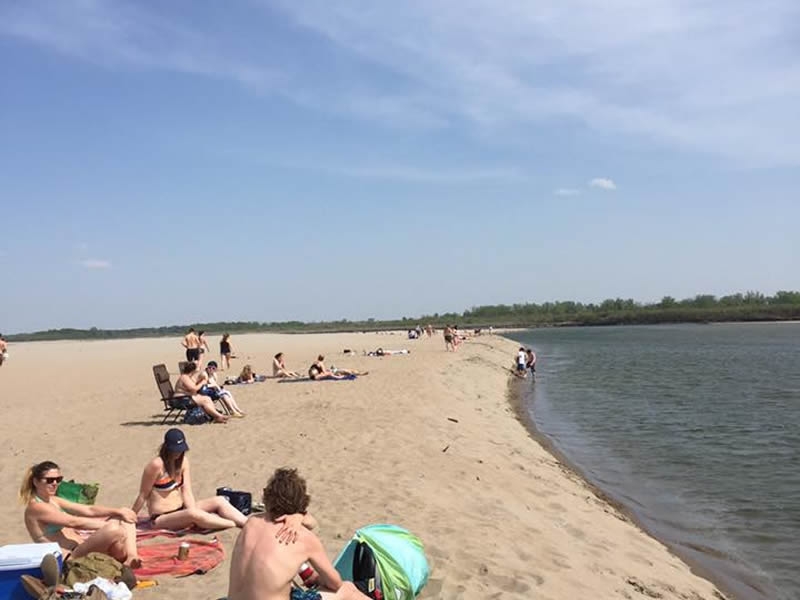 |
| Photo: CJWW |
Perhaps better known by its users as “Bare-Ass Beach,” Paradise Beach is about 20 kilometres south of Saskatoon on the South Saskatchewan River. The beach’s growing popularity has been a mixed blessing—while more folks are discovering the pleasures of an all-over tan, garbage and crowding has been an issue recently. If you go, be respectful and clean up your trash.
Located on the Saskatchewan River, Paradise Beach is a well recognized clothing-optional beach despite does not have an association to advocate for naturalists. Also worth noting is the beach is patrolled by local police to maintain the family-friendly atmosphere.
Paradise Beach is a place to sunbathe. Leave the city by Valley Road and continue 3.2 km past the Berry Barn. Just past a tree farm, turn left (head south) onto a grid road (Range Road 3063) and continue for another 3.2 km. The parking lot entrance is marked by one tall tree and some boulders. If the road curves right, you’ve gone too far. Vehicles may remain in the parking lot from sunrise to sunset.
Dogs are allowed on leash.
6. Patricia Beach, Manitoba
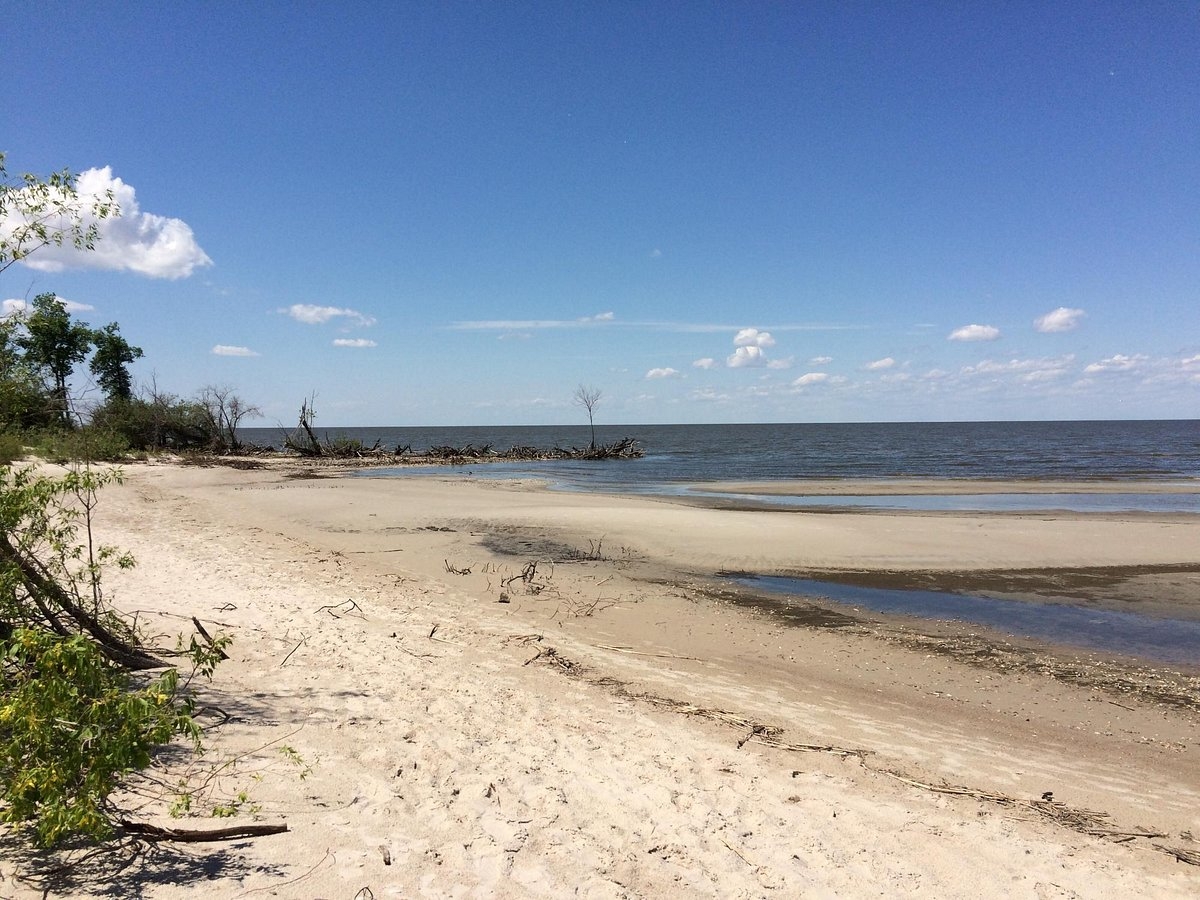 |
| Photo: TripAdvisor |
This beach is located within a provincial park, and is recognized as a clothing optional beach on both weekdays and weekends. That being said, tourists are recommended to walk further north on weekends to avoid commotion with local residents or the RCMP.
Located in the Interlake Plain portion of the Manitoba Lowlands Natural Region, the park is stretched along 2.5 kilometers of the south-east shore of Balsam Bay in Lake Winnipeg. Terrestrial features in the park include the natural sand beach, shifting sand dunes, a lagoon/marsh and scattered stands of deciduous forest. The park protects various habitats for birds including a wetland for water birds and the beach is sometimes used for nesting grounds by Piping Plovers.
The main attraction in the park is the beach, which is backed by sand dunes. The beach makes for pleasant walks and provides access for swimming in the lake. There are also picnic areas and washrooms located within the park. The marsh presents opportunities for viewing a variety of wetland species.
Park Directions
Patricia Beach is located 84 kilometres north of Winnipeg, MB off Highway 59.
7. Kouchibouguac National Park – Kouchibouguac, New Brunswick
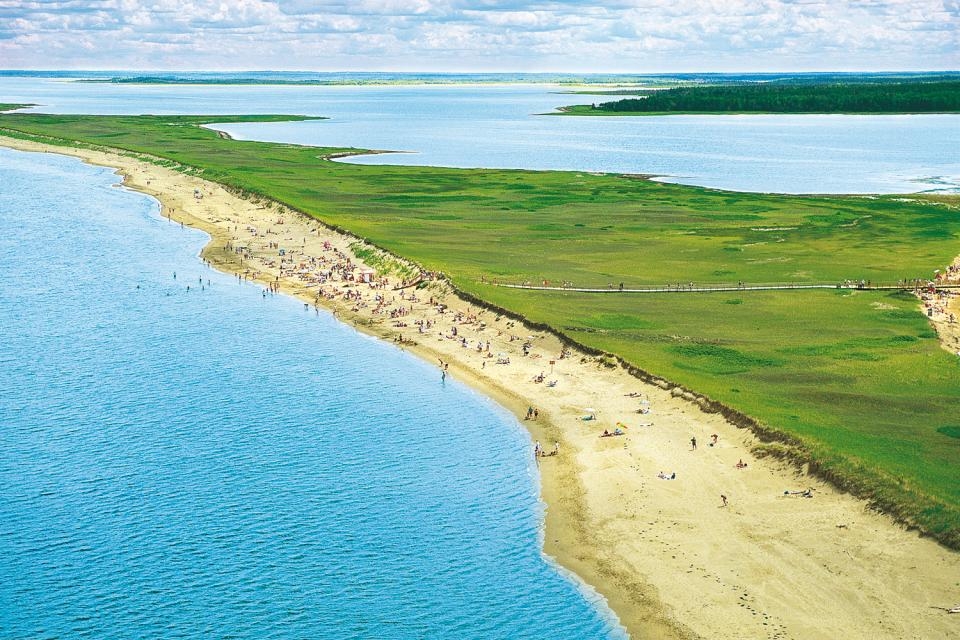 |
| Photo: Easyvoyage UK |
Kelly’s Beach in Kouchibouguac National Park has a long, sandy beach with a section away from the lifeguard station that has been popular with clothing-optional enthusiasts for many years. If you’d like to explore the park beyond the beach (clothed, of course), there are several bogs, eight hiking trails, and a network of bike trails as well.
Kouchibouguac National Park is a national park located on the east coast of New Brunswick in Kouchibouguac and was established in 1969. The park includes barrier islands, sand dunes, lagoons, salt marshes and forests. It provides habitat for seabirds, including the endangered piping plover, and the second largest tern colony in North America. Colonies of harbour seals and grey seals also inhabit the park's 25 kilometres (16 mi) of sand dunes. It is also home to the extremely rare and fragile Gulf of St. Lawrence aster, though in 2006, storms eradicated most of the asters' colonies. The park's size is 238 km2 (92 sq mi). Recreational activities in the park include swimming, cycling and hiking. In recent news, the park has reported sightings of the fisher marten in the area, making it one of the few places in New Brunswick that have fisher populations. The park's various public activities attract thousands of visitors each year. Kouchibouguac offers a range of activities, from a river adventure in a voyageur-style canoe, to going seal watching, to a talk about Mi'kmaq band governments. The park is also home to the popular Kelly's Beach.
Kelly's Beach, a very long sand dune, is a popular attraction along with a number of bogs, a boardwalk trail, eight hiking trails, a network of bicycle trails, two campgrounds, canoe and boat launch and the Cap-St-Louis fishing port. But this beauty cannot eliminate the pain experienced by the former residents, whose story is now told in a permanent exhibit at the park's Visitor Centre.
The park has a Mi'kmaq name which is reflected in the name of the Kouchibouguac River. The river's name means "river of the long tides" in Mi'kmaq. The decision to name the park in this manner did not sit well with many local residents, Acadians who wanted a name that better reflected their identity. Many wanted the park to be called Claire-Fontaine, after one of the communities that was destroyed.
As a result of the resistance to the park, Parks Canada changed its rules, so no one would ever again experience forced removal.
Other rivers that flow through the park include the:
- Black River
- Kouchibouguacis River
- Saint-Louis River
- Portage River
The story of the park had been the subject of two big budget documentaries. In addition, the park was the subject of a short film in 2011's National Parks Project, directed by Jamie Travis and scored by Casey Mecija, Don Kerr and Ohad Benchetrit. There is also a website which provides access to 26 video portraits of the people removed from their land as part of the process of creating the park.
8. Oka National Park – Oka, Quebec
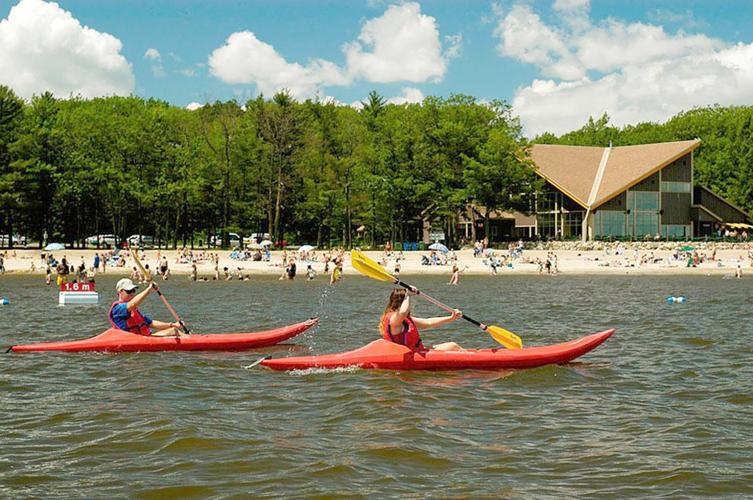 |
| Photo: The Suburban |
Just slightly west of Montreal, and known affectionately as “Oka-pulco,” Oka is home to a beach on the shores of the Lac Des Deux Montagnes with growing popularity; on warm summer weekends, more than 300 people take advantage of the opportunity to get a tan everywhere. Just be aware: there are no services on that portion of the beach, so pack everything you’re going to need.
Oka National Park (Parc national d'Oka) is a small provincially administered park, located within the village of Oka and between Pointe-Calumet on one side and Saint-Placide on the other side. on the north shore of Lac des Deux Montagnes in Quebec, Canada. The Park is home to one of the largest heronries in Quebec and the historical site of Calvaire d'Oka (Calvary of Oka) shrine which dates from 1740.
The Park has an area of 23.7 square kilometres (9.2 sq mi). It shares territory with the municipality of Oka, which is in the Deux-Montagnes Regional County Municipality and the region of Laurentides. The Park includes beaches and marshes located north of Lac des Deux Montagnes, as well as the Calvaire d'Oka. The Park is traversed by Highway 344 and is also accessible by Quebec Autoroute 640 which ends on Highway 344.
The beach offers a pleasant and peaceful atmosphere naturists have frequented the area for over 20 years.
9. Little Tribune Bay, British Columbia
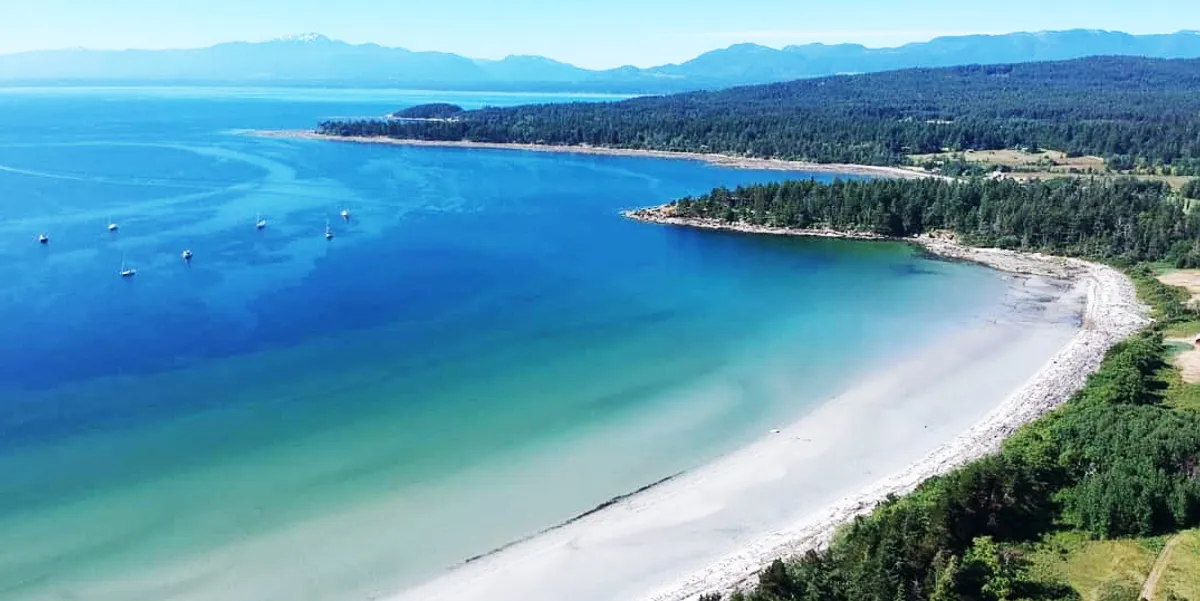 |
| Photo: Narcity |
There are no swaying palm trees to shade sunbathers, but Tribune Bay on Hornby Island is still close to paradise. Nicknamed “Little Hawaii,” the white sandy beaches of Tribune Bay stretch endlessly out to meet an aquamarine sea. Boasting close to 1 km of fine white sand beach, the south-facing Tribune Bay is easily one of the most spectacular on the east side of Vancouver Island. Here, shallow waters meet near tropical temperatures during the summer and the bay is considered to be one of the warmest salt water swimming areas in B.C.
If you visit the park in the spring you’ll be treated to a dazzling display of wildflowers cloaking the hillsides along the beach. In the summer, dark blue salal berries and edible red huckleberries provide colourful contrast to the white sand and unusual rock formations along the shoreline.
A five-minute stroll for Tribune Bay will lead you to “downtown” Hornby Island, an eclectic community with a unique assortment of shops and services. You may also choose to go sightseeing along the bluffs at Helliwell Park, just around the corner from Tribune Bay.
While Tribune Bay requires clothing, you can shed you bathing suit at the nearby sister beach Little Tribune Bay. Less crowded than it’s sister beach, it is an ideal respite to enjoy the sun and a dip in the ocean sans swimsuit.
10. Three Mile Beach
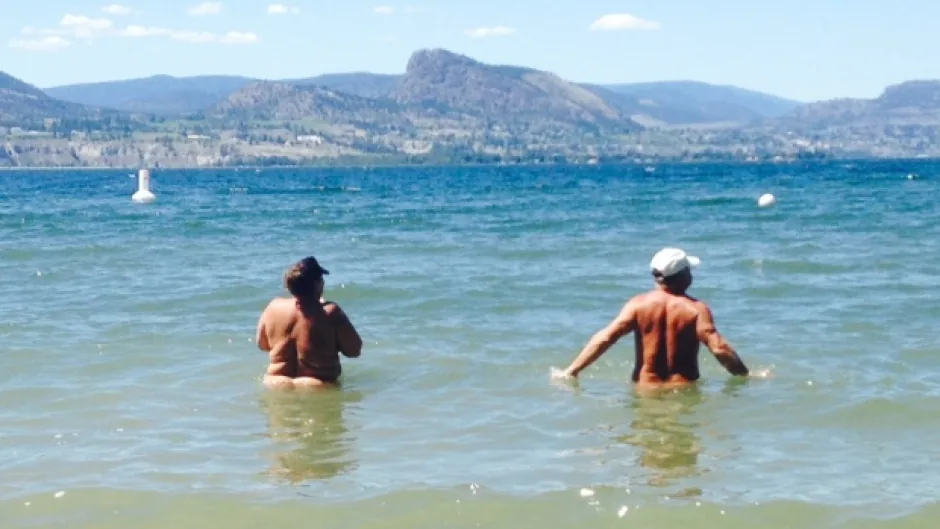 |
| Photo: CBC |
Three Mile Beach is located close to the southern edge of the Okanagan region in British Columbia. It’s also smack dab in the middle of the prestigious wine region. If you’re planning to do some wine tasting in Naramata or spend some time in Penticton, this beach is a must-do activity. Whether you consider yourself a naturist or not, it’s quite the experience.
It’s considered one of the best places to swim in Penticton, so if you’re not one to partake in public nudity, it’s still worth checking out. After speaking to a few locals, it seems as though this beach is still considered a bit of a hidden gem.
This long beachfront is in its own secluded bay only accessible by a dead end residential road. There’s a small parking area at the end of the road. Head north out of Penticton onto Naramata road. Turn west onto Three Mile Road until you hit the end.
As long as you don’t arrive in the middle of the afternoon on a Saturday, you should be able to find a parking spot. There have been issues in the last few years about lack of parking and visitors blocking private driveways.
So it’s best to either arrive early or at the end of the afternoon.
After you park you realize that you can go one of two ways. To the south is a dog-friendly beach, and to the north is the wooden stairs heading down to the beach.
A quick Google search pulls up some local news articles from 2014 and 2015 that discuss whether nudity is still acceptable in the area. Details centre around feuds between the local residents and naturist community members.
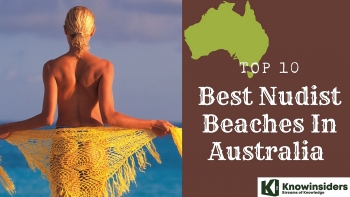 Top 10 Best Beaches in Australia Where Nudism is Legal and Accepted Top 10 Best Beaches in Australia Where Nudism is Legal and Accepted Easygoing Australia has an abundance of choices when it comes to beaches where nudism is legal and accepted. For people who enjoy their clothes off ... |
 Top 10 Best Nude Beaches In the U.S Where You Show Body without Being Judged Top 10 Best Nude Beaches In the U.S Where You Show Body without Being Judged Going to the beach nude might be a weird idea in many places, but there are a lot of cool beaches in the United States ... |


























